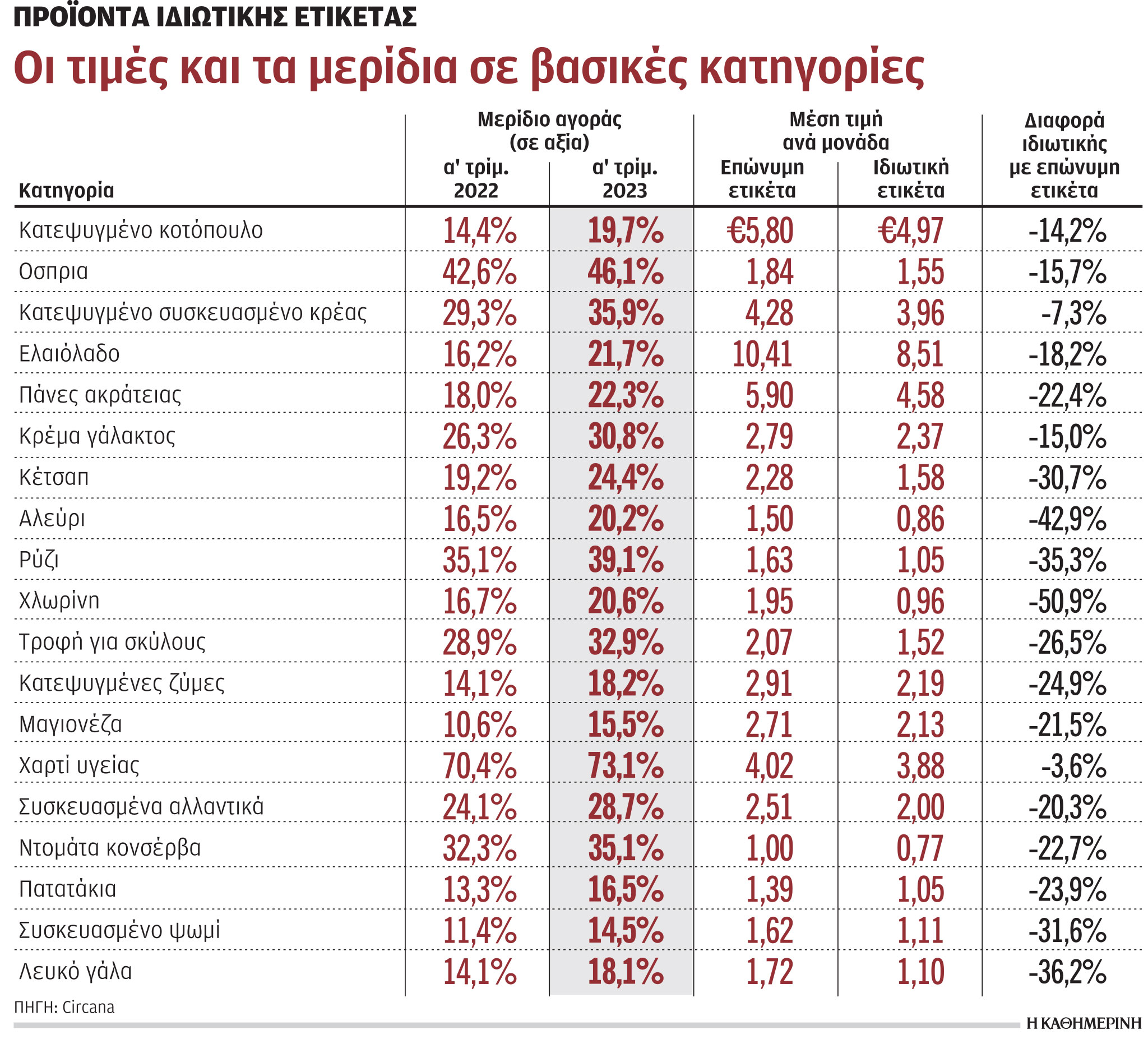
Even at 6.6 percentage points, market share in some private-label product categories rose year-over-year, indicating that more and more consumers are turning to cheaper options in supermarkets. Even in categories where a year ago private label market share was close to 10% and certainly below 15%, it is now close to 20%. Typical examples are milk, frozen dough, frozen chicken, with private label market shares hovering at over 18%-19%, with no signs of shrinking, at least for the time being.

In the top 20 supermarket categories (not including Lidl discount chain sales), private label share increased from 2.7% year-over-year, according to research firm Circana, released today by K. (toilet paper) to 6.6 percentage points (packaged frozen meat). The fact that toilet paper has had relatively little growth in share hides the fact that it is the category with the highest share of private labels, now standing at 73.1% from 70.4% in 2022. the share is now close to 36%, up from 29.3% a year ago. In one of the most important categories, white milk, the private label share now stands at 18.1%, up 4.1 percentage points from last year. More than 20% comes from private label products in categories such as olive oil (21.7% compared to 16.2% last year), incontinence diapers (22.3% compared to 18 % last year), flour (20.2% compared to 18% last year). 16.5% last year), and approximately more than 30% is accounted for by private labels in the categories of legumes (46.1%), packaged frozen meat (35.9%), cream (30.8%), rice (39.1 %) etc. .
In milk, it has reached 18.1%, and in packaged frozen meat it is approaching 36%.
Strong inflationary pressures were the main reason why consumers in Greece turned to private label products last year and continue to do so this year. This is because while prices for private label products have risen in percentage terms higher than those for their respective brands, the former remain significantly cheaper. According to Circana, for milk, one of the most basic product categories that households buy very often, the average price for private label is 1.10 euros, and for branded – 1.72 euros / liter, “scissors”, i.e. 62 minutes or 36.2%. Even if a household buys milk twice a week, by choosing a private label, it will save 60 euros per year. For olive oil, the price difference is about 3 euros, for packaged bread – 51 cents or 31.6%, for cold cuts – 51 cents or 20.3%, for frozen dough – 72 cents or 24.9%, while how now bottled bleach costs an average of 0.96 euros if it is a private label, while the price of a brand name reaches 1.95 euros. A kilo of flour is 43% cheaper, with an average private label price of €0.86 and a private label price of €1.50.
Although market participants in Greece believe that the increase in the share of own brands in Greece is seasonal and temporary, there are signs that now, unlike other periods, the purchase of these goods is a more permanent consumer habit. The improvement in content and packaging, the presence of private label codes in almost every category, their differentiation into very cheap but also premium products, and the fact that young people and especially Generation Z (born between 1996-2010) indicate that this time the situation is quite different.
Source: Kathimerini
Lori Barajas is an accomplished journalist, known for her insightful and thought-provoking writing on economy. She currently works as a writer at 247 news reel. With a passion for understanding the economy, Lori’s writing delves deep into the financial issues that matter most, providing readers with a unique perspective on current events.